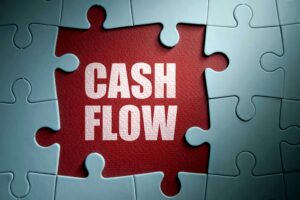
A high NRR suggests effective customer retention and successful expansion strategies, leading to sustainable growth without relying solely on new customer acquisition. To get a full picture of the value that different investments can deliver, business leaders can combine an ROI analysis with assessments of nonfinancial complementary factors that matter most to the organization. By aligning on which complementary factors are most important and how to measure them, management can decide which investments will make the biggest contribution to strategic priorities. Employ NRV calculations for external reporting to comply with GAAP and IFRS standards. This enhances transparency and reliability in financial reports, crucial for stakeholders’ trust and regulatory compliance.
Net Revenue Retention Formula (NRR)

Whether for academic, personal, or professional use, Sourcetable stands out as a versatile and reliable tool. It not only executes calculations but also enhances understanding and efficiency in tackling diverse computational tasks. Applying this principle allows stakeholders of the company to feel assured that the financial statements of the company are not overstated and misleading. When accountants face uncertainties in potential profits or gains, they should not be recorded but uncertainties on expenses and losses must always be recorded.

Step two: Deduct expected disposal costs.
It is accepted in both the accounting standards, GAAP and IFRS to ensure the ending inventory value is neither overestimated nor underestimated. Consider a fashion retailer who’s navigating the fast-paced turn of seasons and trends—SleekStyles Inc. At the close of spring, they find themselves with recording transactions an excess inventory of winter coats originally valued at $200,000. Current trends and customer preferences dictate a heavy discount to offload these coats, setting the expected selling price at $150,000.
- When it comes to estimating the ending value of an inventory or accounts receivable, what accountants use for a conservative estimate or valuation method is to compute for the Net Realizable Value (NRV).
- In many cases, the product won’t be sellable at splitoff, because the product isn’t finished yet.
- Under GAAP, it is expected for the accountants to apply a conservative approach in accounting – make sure that the profits and assets of the company are not valued more than they should.
- So the telephones’ NRV can be calculated as $5,000 – $240 -$40, which is equal to $4,720.
- NRV is particularly important for businesses that stock items subject to rapid changes in market value or obsolescence, like electronics or fashion goods.
- Regarding inventory management, your net realizable value determines the inventory’s liquidation value.
Cash Management

It shall also be noted that the carrying cost of an inventory such as https://www.bookstime.com/articles/outsourced-bookkeeping-solutions storage, transportation, or any other costs attached to bring the inventory to its storage shall be subtracted from the selling price in order to come up with the NRV. It is a conservative method, which means that the accountant should post the transaction that does not overstate the value of assets and potentially generates less profit for valuing assets. It usually requires certified public accountants (CPAs) to do the job as it involves a lot of judgment. Net realizable value can also refer to the aggregate total of the ending balances in the trade accounts receivable account and the offsetting allowance for doubtful accounts.

NRV helps business owners and accountants understand the true value of an asset. The conservative principles involved in the calculation net realizable value prevent the overstatement of assets. It also allows for the conservative and appropriate recording of assets for a business. The net realizable value is an essential measure in inventory accounting under the Generally Accepted Accounting Principles (GAAP) and the International Financing Reporting Standards (IFRS). The calculation of NRV is critical because it prevents the overstatement of the assets’ valuation. Net revenue retention (NRR) measures the percentage of recurring revenue retained from existing customers, including upgrades and churn, over a specific period.
